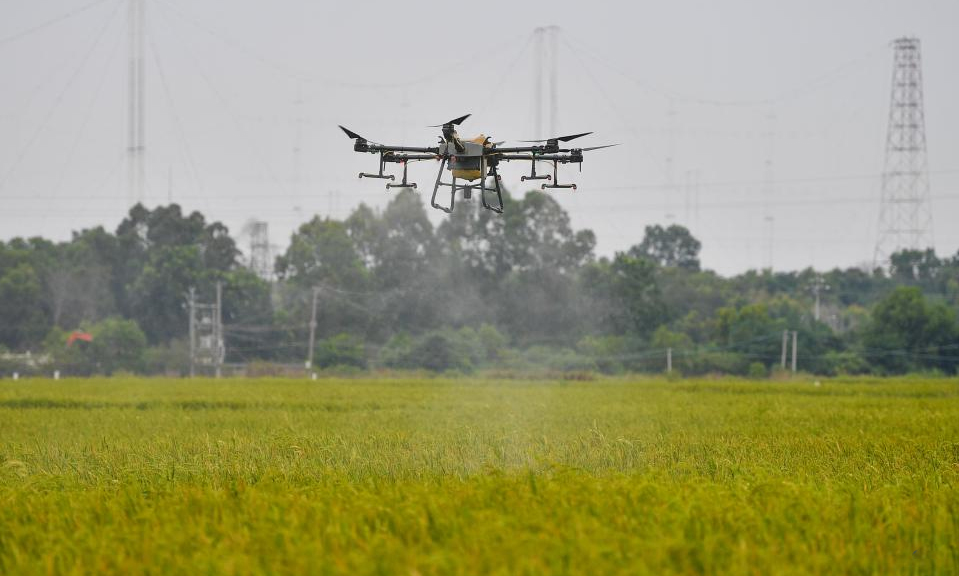Thermal control designs keep taikonauts cool on space station
BEIJING, Oct. 26 (Xinhua) -- For taikonauts, staying cool and comfortable on China's Tiangong space station is no problem.
The station orbits Earth in about 90 minutes at an altitude of 400 km. It experiences large fluctuations in temperature, ranging from 150 degrees Celsius when the station is exposed to the sun to minus 100 degrees Celsius when over the night side of the planet. So how to protect station residents from extreme heat and cold during their six-month stay in orbit? The answer lies in several thermal control designs courtesy of the China Academy of Space Technology.
The fluid loop, with a certain liquid circulating through its pipes, is the key component of the station's thermal control system.
"Just like the blood vessels in the human body, the loop pipes run all over the station modules," said Huang Lei, deputy chief designer of the thermal system. "They maintain a temperature balance by removing heat from the parts that tend to overheat and adding heat to other components that tend to get cold."
Hardware in the Wentian lab module, by far the largest and heaviest component of the Chinese space station, also generates a large amount of heat.
Huang's team has developed three sets of liquid cooling systems that can collect and radiate this excess heat to outer space. One of them was specially designed for experiment payloads outside the lab, and it has a lighter weight than that used on the International Space Station, the researcher added.
Apart from internal equipment, the academy scientists have also developed a layer of silver-colored metallic-based coating for the crewed spacecraft to keep a balance between the deep freeze of space and the sun's blazing heat.
The new coating does a double-duty job: providing low solar absorption to help reduce the sun's effect on the spacecraft's interior temperature; and providing low infrared emittance to block heat release from internal sources.
The thermal-control coating was first used on the Shenzhou-13 spaceship, which was launched on Oct. 16, 2021. It kept the cabin environment within acceptable temperature ranges (between 18 and 26 degrees Celsius), allowing the taikonauts to stay comfortable in their orbiting home.
Cargo spacecraft adopt another kind of thermal control design -- multilayer insulation. It composes of layers of high-reflectivity film and polyester mesh, which can prevent heat loss.
Scientists dressed the Tianzhou-4, carrying supplies for the Shenzhou-14 crewed mission, in a two-color "coat." Its cargo cabin was given gray-colored insulation to absorb more sunlight for a higher temperature for human activities, and its propellant cabin, filled with equipment, was painted with white insulation to reflect the sun's heat to cool off.
After the launch of the second lab module Mengtian, the Tianzhou-5 cargo craft, and the Shenzhou-15 manned spaceship, the space station will have more equipment and visitors. It will become more challenging to find a sound temperature balance in orbit, but scientists believe these thermal control designs will keep the station livable and enable scientific experiments to be conducted successfully.
Photos
Related Stories
- China's space station lab module Mengtian ready for launch
- SpaceX launches 54 more Starlink internet satellites into space
- Rocket for Tianzhou 5 arrives at launch site
- China to livestream class from space station lab module
- China's Mengtian space lab fueled up for upcoming launch
- China launches space-based observatory to unravel the Sun's secrets
- HK, Macao start to select space experts
Copyright © 2022 People's Daily Online. All Rights Reserved.









